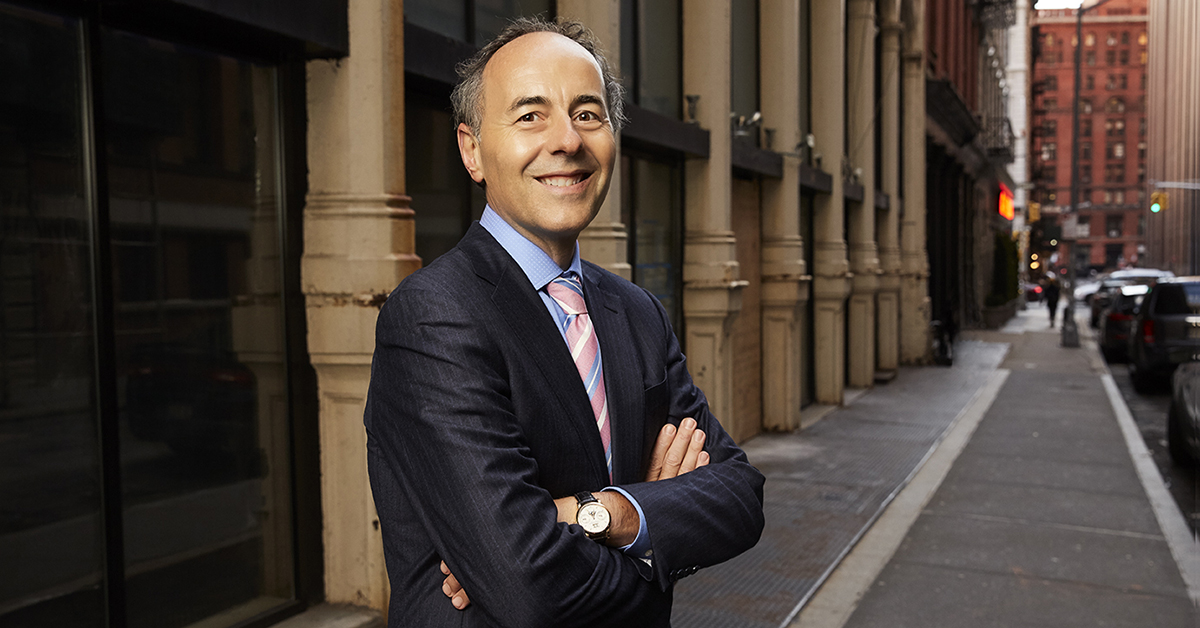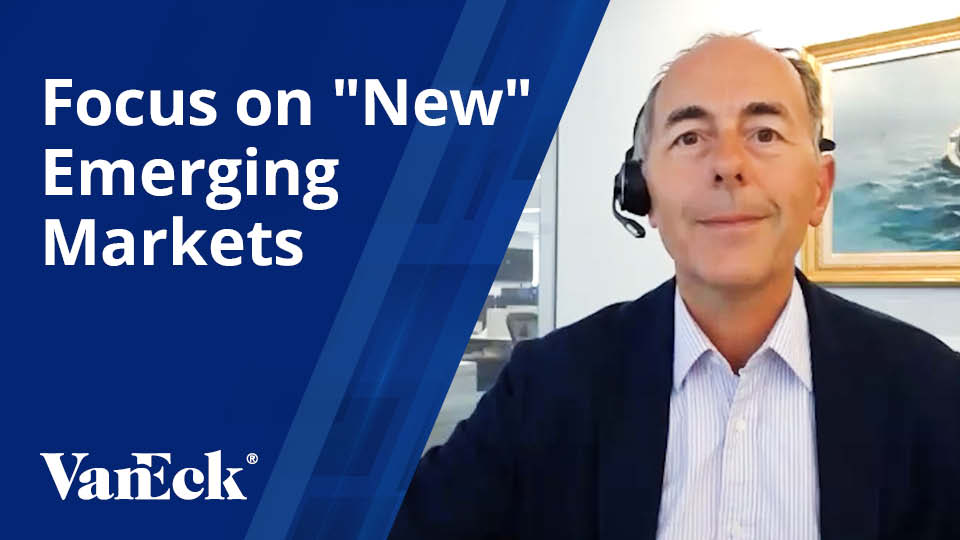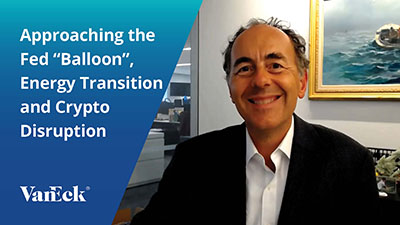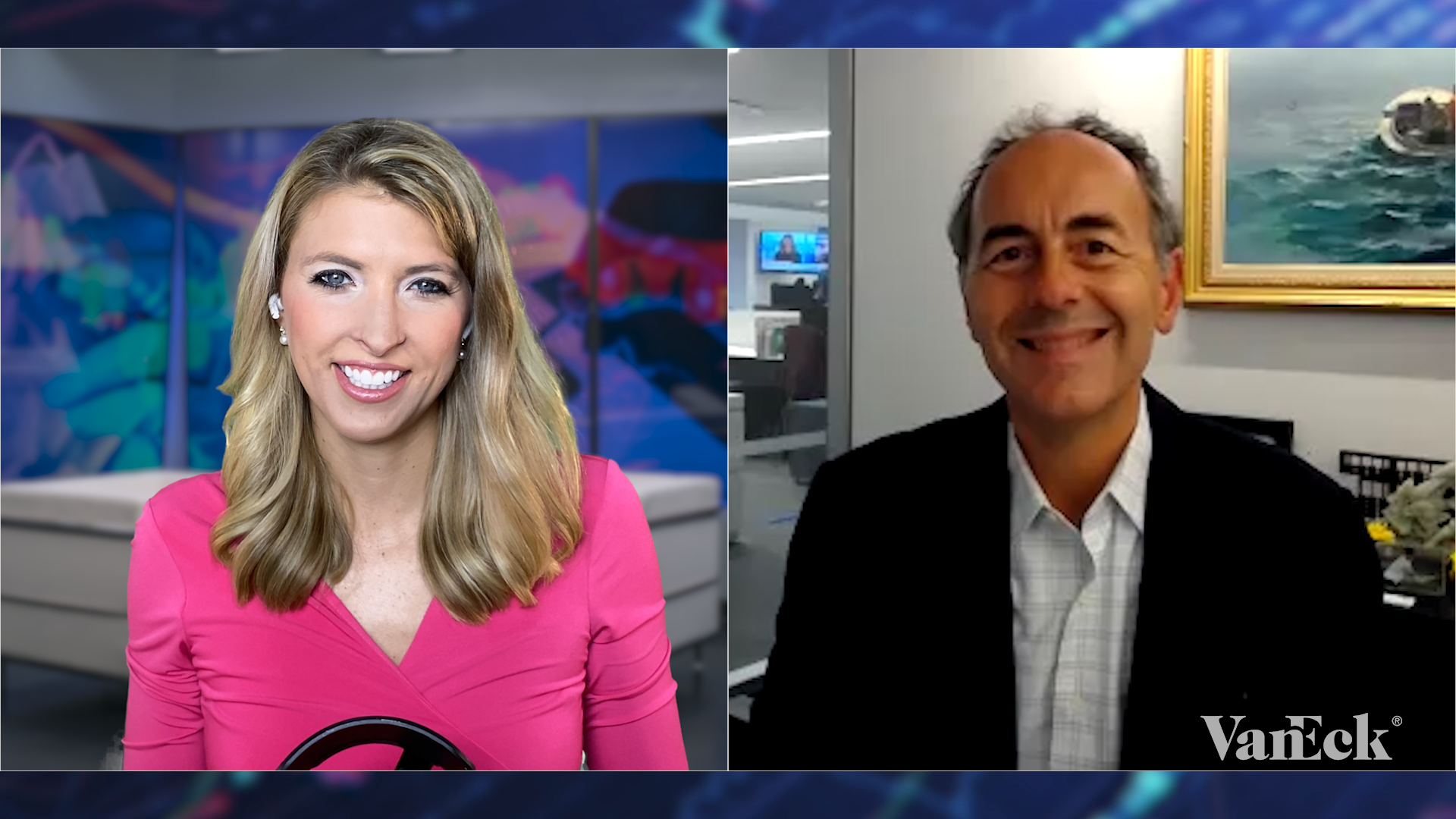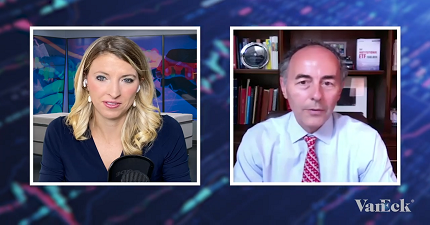3Q’17 Investment Outlook: Emerging Markets and Digital Asset Opportunities
11 August 2017
Watch Time 6:26
3Q'17 Investment Outlook: Emerging Markets and Digital Asset Opportunities
TOM BUTCHER: I am here with Jan van Eck, CEO of VanEck, to discuss his third quarter outlook. Last time we spoke you cautioned investors about being prepared for rising interest rates, would you still do so?
JAN VAN ECK: Yes. At the beginning of 2017, we felt that we were in a long, slow, rising interest rate environment. I still feel that this is the case now in the summer of 2017. I think that investors can adjust by looking at fixed income solutions that are not negatively impacted by this gradual increase in duration risk. Thus far, we had thought that both high yield and emerging markets debt were attractive places for investors to look, and indeed, both asset classes have done well YTD in 2017. I think that what we saw in the first half, and what is worth noting, is that Europe has gotten "on board the train." Let us call them two years behind the United States in terms of a gradual move away from very stimulative central bank policies, because, among other things, the European economy is relatively strong. They are trailing us in terms of rate policies, so that will be an interesting development to watch.
BUTCHER: Would you suggest that investors make any further preparations given the current environment?
VAN ECK: No. I think we have seen that, despite a slight increase in interest rates, fixed income can offer diversification and can still provide positive overall positive returns, as well as coupons, in this kind of environment. Just diversify: That was, and continues to be, our message, and high yield and local currencies emerging markets debt are good places to consider.
BUTCHER: Emerging markets equities have had a pretty good first half. Where do you see this asset class going in the second half of 2017?
VAN ECK: I think we are in the early innings for emerging markets equities. Emerging markets have underperformed the U.S. for five years. To date in 2017, emerging markets company profits are growing at their highest rates since 2011, and the asset class is very attractive. This strength has driven the near 20% returns in emerging markets thus far this year. But we believe that we are just at the beginning of this positive cycle. Commodities hurt Latin American earnings over the last several years, and we think that this is behind us, and that we have a very nice base going forward. The possible mistake for investors would be to miss the early innings of what we see as a positive cycle.
BUTCHER: Let's turn to commodities. Both oil and energy stocks have had a pretty difficult first half. Do you view the current levels as a buying opportunity?
VAN ECK: Commodities had an 80 month bull market in the last decade, and then a very difficult bear market which we believe bottomed in the first quarter of 2016. We did say, however, that there was going to be significant adjustment needed as prices continue to rise, which would require different corporate behavior and better use of capital. Frankly, investors just voted "no" in the second quarter to energy stocks. Oil prices fell a little bit, but it was due to concerns about inefficient use of capital. By contrast, mining companies performed reasonably well. We felt that this was going to be a slow "grind" of commodity cycle. If we continue to be correct in that view, then this might be a good buying opportunity. That is the view we having been sticking with throughout 2017.
BUTCHER: VanEck had a really successful natural resources conference in Denver in June. What were your key takeaways and what do you think made it so special?
VAN ECK: We had a full day of meetings with company managements from energy and mining companies. This was a follow up to the first conference we held in 2016. The big reminder I get from our conferences is how difficult it is to manage in this variable macro environment. I am also impressed with the strong management teams of some of these companies are that we own in our portfolios. We always track the macro environment, but we like to pick what I call the FANG1stocks in the resources world. That means what has worked in the technology world (for the Facebooks, Amazons, Netflixes, and Googles), which is incredible profitability and high growth rates. That is what we are looking for. We want the low cost winners in the energy world, and it was great to spend quality time with those management teams.
BUTCHER: Digital assets seem to be in the press more. What do you think about cryptocurrencies and distributed ledgers?
VAN ECK: This is a new and dynamic arena that I think we have to pay attention to. One of my colleagues called bitcoin "gold for 23 year olds." Which I think is a nice summary, because the investment appeal of a digital asset is that it is not linked to government policy. It is completely off on its own. The question is: Is there any long term intrinsic value to these digital assets? I think that the technology of a distributed ledger is very powerful because you can have an instantaneous version of the truth that is shared. The crowd, as you know, can adopt technologies at exponential rates. Those are the positives. The negatives are that most of the database designs or distributed ledgers are not run by a particular person, as generally companies are run (like corporate software, for example, Microsoft), but it is more of a crowd. Whether the crowd can actually govern these distributed ledgers or not is a fundamental existential question. In the meantime, digital assets are certainly a promising technology and we are eager to see if they will find real life applications and provide investment opportunity.
Related Insights
Related Insights
01 September 2023
09 September 2021
27 November 2020



